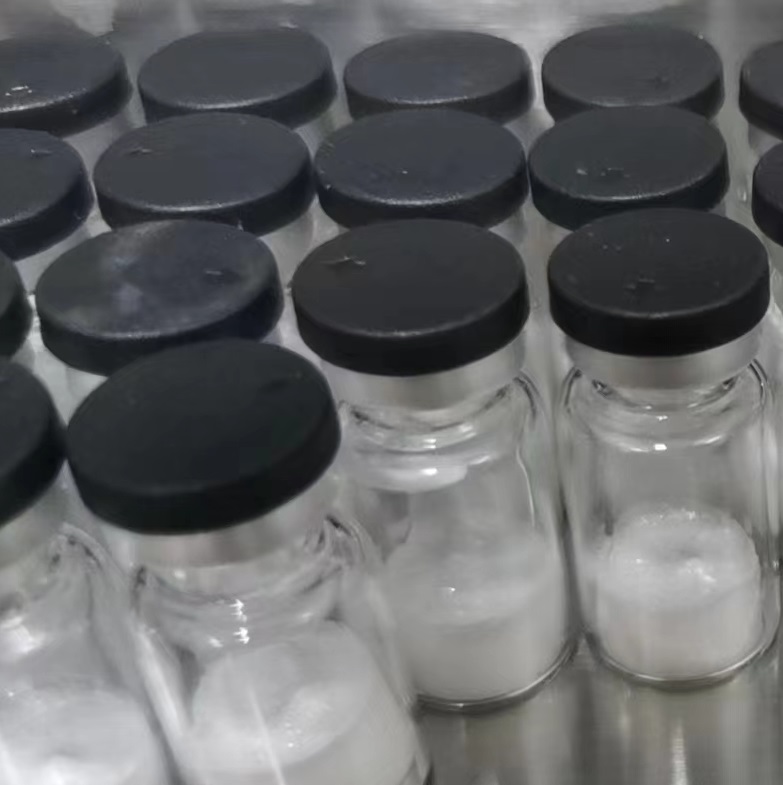-
Categories
-
Pharmaceutical Intermediates
-
Active Pharmaceutical Ingredients
-
Food Additives
- Industrial Coatings
- Agrochemicals
- Dyes and Pigments
- Surfactant
- Flavors and Fragrances
- Chemical Reagents
- Catalyst and Auxiliary
- Natural Products
- Inorganic Chemistry
-
Organic Chemistry
-
Biochemical Engineering
- Analytical Chemistry
- Cosmetic Ingredient
-
Pharmaceutical Intermediates
Promotion
ECHEMI Mall
Wholesale
Weekly Price
Exhibition
News
-
Trade Service
Abaparatide, whose English name is Abaloparatide, is a new type of parathyroid hormone-related peptide (PTHrP) developed by Radius Health .
New parathyroid hormone related peptide (PTHrP), can increase bone mineral content, bone mineral density and bone strength, promote bone formation subcutaneous injection therapy in the risk of fracture or osteoporosis in postmenopausal women after other treatments ineffective, and may Effectively reduce the rate of new vertebral body and non-vertebral body fractures
Research background: Abappatide is a parathyroid hormone-related peptide approved by the U.
Study objective: To evaluate the cardiovascular safety of abaparatide
Assessing the cardiovascular safety of abaparatide
Plan design: Review heart rate (HR), blood pressure (BP) and cardiovascular-related adverse events (AEs), including major adverse cardiovascular events (MACE) and heart failure (HF)
(A) ACTIVE (NCT01343004): A phase 3 trial in which 2463 postmenopausal osteoporotic women were randomly given abaparatide, teriparatide or placebo for 18 months;
(B) ACTIVExtend (NCT01657162): Participants in the abaparatide group and placebo group received alendronate treatment for 2 years;
ACTIVExtend (NCT01657162):(C) This project is also a pharmacological study on 55 healthy adults
Results: Abbapatide and teriparatide can temporarily increase HR relative to placebo
Temporarily increase HR
Table 1 The average change of heart rate in patients with ACTIVE from before administration to 1 hour after administration
In healthy volunteers, the increased heart rate disappeared within 4 hours
If your heart rate increases within 4 hours, it will disappear
Figure 1 Heart rate changes (90% CI) of healthy subjects within 24 hours after a single administration of abaparatide and placebo;
BPM is judged as the expected variation of resting heart rate of healthy subjects
The corresponding changes in the mean systolic and diastolic blood pressures in the lying position 1 hour after treatment were -2.
Table 2 Changes in blood pressure from before administration to 1 hour after administration
The proportions of severe cardiac AEs were similar among the groups (0.
The proportions of severe cardiac AEs were similar among the groups
Table 3 Treatment emergency adverse events that may be related to increased heart rate in ACTIVE
In a retrospective analysis, abaparatide (P = 0.
The first occurrence of MACE + HF takes longer
Table 4 MACE and MACE + HF in ACTIVE
Figure 2 The time of first onset of MACE and MACE + HF in ACTIVE and ACTIVExtend
A) ACTIVE and ACTIVExtend MACE; B) ACTIVE and ACTIVExtend MACE + HF
ABL Abbaparatide; ALN Alendronate Sodium; HF: Heart Failure; MACE: Major Cardiovascular Adverse Events; Mo Month; PBO Placebo; TPTD Teriparatide
Conclusion: Abapapatide is associated with transient heart rate acceleration and small drop in blood pressure in postmenopausal women with osteoporosis, but does not increase the risk of severe cardiac AEs, MACE or heart failure
After Aba Pa peptide women with postmenopausal osteoporosis brief heart rate and blood pressure related to a small decline, but no increased risk for serious cardiac AEs, MACE risk of heart failure or post-menopausal osteoporosis with Aba Pa peptide women's short rapid heart rate It is related to a small drop in blood pressure, but does not increase the risk of serious cardiac AEs, MACE or heart failure
Note: MACE is the abbreviation of Major Adverse Cardiovascular Events, that is, major adverse cardiovascular events, which mainly include three end-point events: cardiovascular death, myocardial infarction and stroke
Cardiovascular death, myocardial infarction and stroke
Original source:
Cosman F, Peterson LR, Towler DA, Mitlak B, Wang Y, Cummings SR.
Leave a message here







